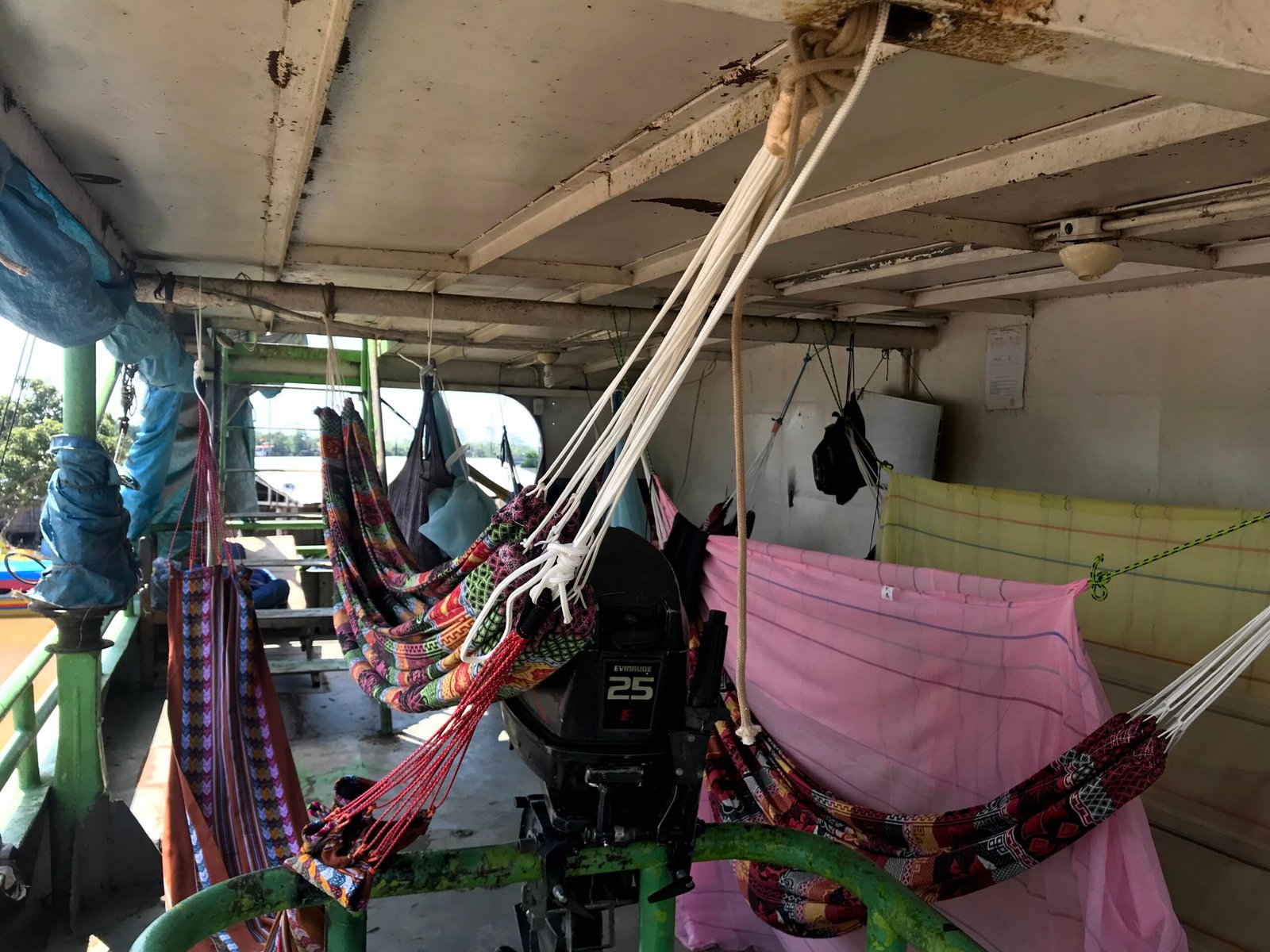
Workers were loading wheel barrows full of Brasil nuts into the hold of the boat. Gene and I sat to the side, sampling the nuts that had spilled, by opening them with a levered mechanism that cracked open the hard shells and gave us a small feast. The machine was there for sampling purposes, a quality control measure. Nobody questioned that two Americanos were sampling more than a sample; such was the social order – manual workers didn’t question those who had the money and the time to travel up the river and lounge on the floor of the boat sampling the nuts they were loading. Maybe they considered us good quality control; we did alert them of two or three bad nuts.
The deck of the boat had hammock hooks all around the pilot house, and hammocks were strung up to accommodate the passengers. The boat photo above and the hammocks below are from the internet, chosen because they’re close to my memories.

By the time we came on board, the boat was full, and there wasn’t a redi, pronounced “head-gee” available for us, so we decided to sleep upstairs, or up a ladder, on the roof. For a few days, we slept under the stars, as the boat chugged along the Tocantins. My leather bag was my pillow; I don’t remember how we got blankets or comfort underneath, but I do remember sleeping well, as young people do in most circumstances.
Meals on the boat consisted of a stew served at a table at the back of the boat. I recall the stew meat hanging off the stern, covered in flies. I had a young man’s appetite so I ate, content that the cooking had boiled away whatever the flies had deposited on the meat.
The delivery didn’t seem to be on a tight schedule. The boat stopped at a small town, where there was some sort of “feira” or festival happening.

We had good food, fly-free as far as I could tell, and some beer. After our meal Gene went off for some reason, and I amused myself by killing flies and hand-feeding them to a large preying mantis that had visited my table. It would probably have enjoyed the boat stew. We boarded and continued up the river.
Before the next stop, the boat pilot came up the ladder and said there was a problem. The boat needed oil for its engine or it wouldn’t make it to Belem, the destination city.. He asked if we had money he could borrow. Gene gave him 500 cruzeiros, $50.00 in American money, no small amount there, in 1975. In fact, the 2024 buying value of 1975 $50.00 in the USA is about $293.00. Gene was promised he would be reimbursed in Belem.
A lasting impression was left to me when we reached the Amazon River. The other side of the river was a faraway thin blue line, miles from the boat! We made it to Belem, we waited for two hours in the boatyard, and Gene got his money.
The rest of our trip was by bus, down the coast to Salvador. In Belem I had bought a large batik, cloth art made using dyes and wax, and a small basket produced by an indigenous Amazonian tribe. I think it was Fortaleza where I purchased my handmade double hammock. Those three items are with me still, as are the images and fleeting memories of a magical journey.
Don’t miss out! Be the first to hear about new books, films, and events from Brent Allen!